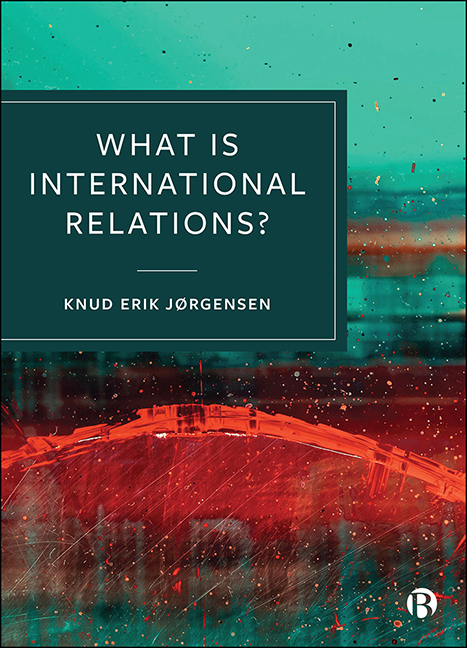Book contents
- Frontmatter
- Contents
- List of Figures, Tables and Box
- List of Abbreviations
- Preface
- Introduction
- 1 What is the Subject Matter?
- 2 What are the Human Sciences?
- 3 What is a Discipline?
- 4 What is Theory?
- 5 What is Disciplinary Diversity?
- 6 What is Community?
- 7 Globalizing International Relations?
- Conclusion
- Notes
- References
- Index
5 - What is Disciplinary Diversity?
Published online by Cambridge University Press: 13 May 2022
- Frontmatter
- Contents
- List of Figures, Tables and Box
- List of Abbreviations
- Preface
- Introduction
- 1 What is the Subject Matter?
- 2 What are the Human Sciences?
- 3 What is a Discipline?
- 4 What is Theory?
- 5 What is Disciplinary Diversity?
- 6 What is Community?
- 7 Globalizing International Relations?
- Conclusion
- Notes
- References
- Index
Summary
Introduction
In recent decades, diversifiers have repeatedly made calls to move beyond hegemony and towards more diversity in IR. There is no apparent end to how diverse the discipline should be, nor any end to how diverse diversity can be. With its plurality of theoretical traditions, myriads of methodologies to serve the theories, a dozen subdisciplines, various regional disciplinary cultures, and its straddling of the social sciences and the humanities, IR is actually as diverse as it gets. Moreover, in reality there is no hegemony. Based on comprehensive empirical studies, Helen Turton (2015) concludes against conventional wisdom, that (American) hegemony is first and foremost an imagined state of affairs. Likewise, May Darwich et al (Darwich et al, 2020; Darwich and Kaarbo, 2020) document how IR scholars in the Arab world teach IR in a non-hegemonic fashion. Others point out that Japan has its own configuration of research traditions (Inoguchi and Bacon, 2001). Olubukola Adesina (2020) shows how scholars based in Africa offer important concepts, theories and wider perspectives that do not reflect a supposedly hegemonic ‘Centre’; indeed, she points to the observation that some of the supposedly western ideas originate in Africa. Hence, both the widespread prescriptions offered as well as the hegemony ‘diagnosis’ would appear to be resting on shaky foundations.
Nonetheless, diversity remains an issue, and a contested one at that. Whereas some believe the discipline to be far too diverse, counting diversity as a threat to coherence, discipline or ‘monotheism’ of sorts, others believe the discipline is much too short on diversity – at least diversity as they understand it. The present chapter offers an invitation to consider a possible dispute settlement. As any such mediation begins with an understanding of the positions of the contending parties and their stakes as well as their identity issues, I first outline what Party A – ‘diversity is a threat’ – tends to argue, followed by Party B's – ‘ever more diversity’ – arguments. It is likely that one of the parties will protest this procedure, claiming that their understanding of diversity should be superior or even enjoy monopoly. However, if granted superiority the mediation would fail even before it started. In Kenneth Thompson's words, “Only the tyranny of intellectual life would be served by installing one approach as pre-eminent” (Thompson 1955: 746).
- Type
- Chapter
- Information
- What Is International Relations? , pp. 90 - 105Publisher: Bristol University PressPrint publication year: 2021

